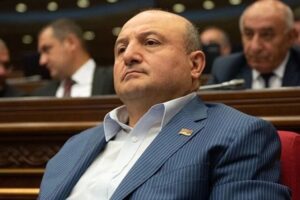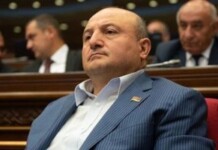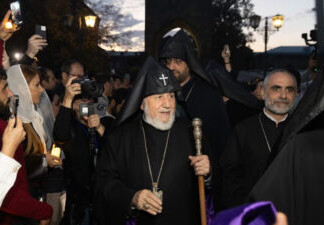By Hagop Avedikian
It has become very fashionable these days to speak about Armenia-Artsakh-Diaspora tripartite unity. For many, especially during this pre-election period, this wonderful national-political unity formula has been turned into a tripod, on which it is both convenient and safe to sit—and for some, profitable. Even certain state structures, which have been tasked with putting into practice in a professional manner this idea of national unity, are exhibiting formal approaches which naturally are unable to attain any results.
The most reliable indicator to understanding the failure of pan-Armenian unity—or, as I would call it, fiasco—is always the financial outcome, in this case the result of zero. First of all, I am considering the eight-year existence of what is called the Pan-Armenian Bank. It is form without content, a bank without money. I could point out other examples in addition to the presence of this absurdity which has continually escaped the attention of financial experts, from the meaningless sum of ten to fifteen million dollars raised annually by the Hayastan All-Armenian Fund, to the guilty listlessness in the construction of the Artsakh-Armenia second chief highway. However, this article is not dedicated to the examination of these examples.
Instead, I would like to present my perspective on the incorrect, or, it is possible to say, dangerous strategy of the government of the Republic of Armenia concerning diaspora Armenians, which gradually is becoming more intense, particularly during this pre-election period.
Some years ago, in 2000, when Aram Zaveni Sargsyan became prime minister due to tragic circumstances, the general assembly of the Armenian Revolutionary Federation (ARF) took place in Yerevan. It began with an official reception in the hall of the government headquarters. The prime minister, with his youthful enthusiasm, during his speech declared “We hand over the diaspora to the ARF.” This sentence, reproduced by memory, at the end of the reception had caught by surprise even my ARF friends. They approached me with a smile which asked for indulgence, and assured that their party had no connection whatsoever with this declaration. I believed, and still do believe, them.
Now, especially after February 2016, when the ARF became the coalition partner of the Republican Party, that declaration of the former prime minister has become a reality. Judging by all types of proceedings with the diaspora, the sole and final political ally in the diaspora of the regime in power of the Republic of Armenia remains the ARF, along with the Catholicate of Antilias associated with the latter. In other words, in fact, this domestic Armenian association has become dominant against the Armenians living in countries abroad, who compose two-thirds of the Armenian people, and in connection to whom it is necessary to carry out state policy and not a political party one. The remaining political and other structures have been and are being disregarded, with the exception, perhaps, of the Armenian General Benevolent Union. The Armenian Assembly of America, and the confederation which unites over 20 organizations in France, have been ignored. The most grievous is that the 1,716 year role of our oldest national cultural organization, the Armenian Church, and its center, the Mother See of Holy Echmiadzin, is being disregarded, giving way to the glory-seeking inclinations of the head of the regional see of the Great House of Cilicia. At the same time, nothing is initiated to suppress the centrifugal tendencies of the Armenian Patriarchates of Jerusalem and Constantinople as part of the work of reestablishing the unity of the Armenian Church.







